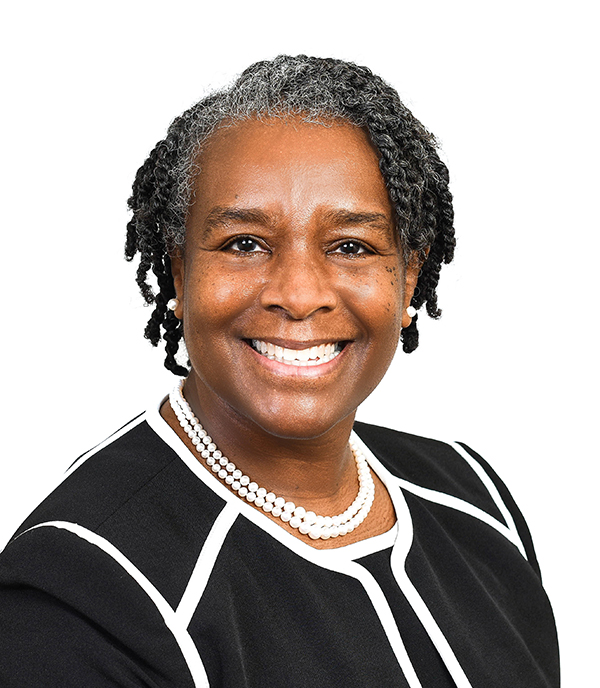 “I’ve been a nurse going on 22 years,” says Elaine Hardy, PhD, RN. “Anything I know I’m willing to share. If I’m the only one who knows it, what good does that do?”
“I’ve been a nurse going on 22 years,” says Elaine Hardy, PhD, RN. “Anything I know I’m willing to share. If I’m the only one who knows it, what good does that do?”
Hardy is an assistant professor at Illinois Wesleyan University and board director for ANA-Illinois. Her commitment to lifelong learning, to her students, and to education as an agent of change are threaded throughout her story.
Changing Careers
Her road to nursing started as a career change from a lab tech at a chemical plant. “My big thing was I was only going to be there 10 years because it was swing shift. Everybody asked, ‘What are you going to do after the 10 years?’ I was like ‘I’ll work at McDonald’s. I don’t have a backup plan.’”
Creating that plan led her to Purdue University. She realized her associate’s degree in biology and her strong science background were an excellent foundation for nursing. She began classes while still working at the chemical plant full-time.
But she found that—even though science is deeply involved—the people side of nursing makes every case a unique formula.
“I always tell people, nursing is a different animal. It’s difficult because it’s people. I say it’s an art and a science. You add a patient, you add a family member, you add a medication, and oh my goodness you have no idea what you’re going to get every time.”
After graduation, she worked on a telemetry floor for a year, before deciding she needed more education. She started the RN BSN program and became a case manager after graduation.
Her love of learning led her to the master’s program at Purdue University Calumet shortly after. She began teaching clinical—while still working as a case manager and a charge nurse on the weekends.
During her master’s program, she and a friend were invited to participate in the Bridges program that enabled them to complete their master’s degrees at Purdue while simultaneously beginning their PhD coursework at the University of Illinois at Chicago (UIC).
“You can do it all. That’s one thing I found out.”
Combining Nursing & Teaching
By this time, she was also an adjunct professor teaching clinical primarily at Indiana University Northwest. Teaching had interested her since childhood.
“I like the excitement that students get when they get it. I try to give that grace to students, because why should you struggle through what I struggled through? So, if I can help you with those concepts or help you gain a better understanding, then I definitely want to do that.”
While working in hospital settings, she was still thinking about how she could translate those experiences for her students. But her commitment to her students is also evident in her clear understanding of what nursing students need to understand at each level.
“Some of it, I had to back up and say ‘Ok, at the undergraduate level, this makes you a safe practitioner. So, this is the information I need to give you.’ You don’t need to know everything in the 385 pages in the book—you need to know this about taking care of this patient and then critically think.”
And, of course, experience as a nurse is one of the greatest teachers.
“What I find interesting is that just because you were taught it in an undergraduate program, it might not have actually solidified or you were able to make all the connections until after—when you saw it in practice or you saw it many times over.”
Those moments when students make the connections continue to inspire her work today.
Providing Health Education
Her passion for education extends beyond the classroom and into her research and community work. She held health education programs for African American women called Shop Talk at the beauty shop, before the pandemic.
“At the beauty shop we talk about everything, but you need the information that’s correct. You need to be guided, especially if you have questions. That excites me.”
Her emphasis on health screenings, getting labs done a week before meeting with a provider, getting second opinions, and bringing someone along for support in difficult health conversations have made a difference.
“A lot of people have started doing that,” she said. “I hate the word ‘empower’ because that means I have power to give you. I like to educate people about what they can choose to do. You do have every right. But DO have all the information so you can make that educated decision.”
Serving on the Board
When her friend and Board President Liz Aquino called to see if she would serve on the board, she knew it was time. She’d served previously in 2015 and has been deeply involved with the National Black Nurses Association as well over the years.
Not surprisingly, she sees ANA-Illinois as having an important role in educating politicians to affect policy—and educating nurses about how they can make a difference in their profession.
“I want to see more nurses get involved. I want to see more nurses really know they can impact their profession. Don’t just pay your dues. Show up at the meetings. Talk about the issues that plague you. How will we know what plagues you if you never open your mouth?”
Individuals united for a common cause and a common good are a powerful force for change.
“There are over 4 million nurses—this is one of the things my students probably hate hearing—there are over 4 million nurses in the United States. We could turn everything upside down. We have that much power, but we don’t unite. We come together and then what we push is our individual agendas. What’s good for everyone?”
